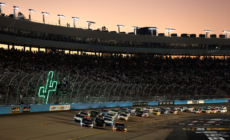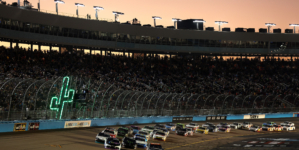-
Vance Offers Fierce Endorsement of Trump’s First Week - 18 mins ago
-
Kaulig Racing Scores Big With New Sponsor, Backs Ty Dillon in 2025 - 36 mins ago
-
Trump Wants to Impose 25% Tariffs on Colombia. Here’s What Could Cost More. - about 1 hour ago
-
SS-GreenLight Racing Announces Exciting New Partnership For 2025 NASCAR Xfinity Series - about 1 hour ago
-
Padres Listed As Likely Landing Spot For Intriguing $25 Million Star Pitcher - 2 hours ago
-
Israeli Army Raids Home of Freed Hamas Member Amid Tensions Over Hostage Deal - 2 hours ago
-
Empire State Building Apologizes After Celebrating Eagles NFC Championship Win - 2 hours ago
-
Southern California Rainstorms Raise Risks of Mudslides - 2 hours ago
-
F1 Champion Brand Joins NASCAR As Justin Marks and Pitbull Strike Gold - 3 hours ago
-
In Buffalo, There Are Two Words on Everyone’s Lips: ‘Go Bills’ - 3 hours ago
Volcanic Smog Threatens Hawaii as Kilauea Erupts Again
What’s New
One of the world’s most active volcanoes, Kilauea, began erupting Monday at approximately 2 a.m. HST on Hawaii’s Big Island, prompting health warnings as volcanic smog threatened downwind communities.
The U.S. Geological Survey (USGS) elevated its volcano alert level from “Advisory” to “Warning” and aviation color code from yellow to red.
By 2:30 a.m., webcam imagery captured lava fountains emerging through fissures in Halemaʻumaʻu within Kaluapele (the summit caldera).
Newsweek has contacted the Hawaii Volcanoes National Park via online form on Monday afternoon for comment.
Why It Matters
Kilauea stands as one of Earth’s most consistently active volcanoes, with regular eruptions documented since 1983.
This event marks its latest eruption, following previous volcanic activity in June and September 2024. While currently confined to Hawaii Volcanoes National Park’s restricted area, the eruption raises significant health concerns through volcanic gas emissions.
A 2018 eruption demonstrated Kilauea’s destructive potential when it destroyed more than 700 homes in the Puna District between May and August, while thousands of earthquakes dramatically altered the summit area.

Associated Press/U.S. Geological Survey
What To Know
The eruption is occurring within the Halemaʻumaʻu crater in an area closed to the public since late 2007. Primary hazards include high levels of volcanic gases—predominantly water vapor (H2O), carbon dioxide (CO2), and sulfur dioxide (SO2). When SO2 is released, it reacts in the atmosphere to create volcanic smog (VOG) downwind, according to the USGS.
Additional hazards include lightweight volcanic glass fragments that can fall downwind of the fissure vents, potentially causing skin and eye irritation within a few hundred meters of the vents.
Strong winds may carry lighter particles greater distances. The area around Halemaʻumaʻu crater remains hazardous due to crater wall instability, ground cracking, and rockfalls that can intensify during earthquakes.
This morning, around 2:20 AM, a new #Kilauea eruption began within Kaluapele (the summit caldera). It was caught on camera by #HVO’s B2cam. Images taken by the webcam were compiled into this timelapse video that shows lava fountains feeding lava flows across the caldera floor. pic.twitter.com/w52KpHOtau
— USGS Volcanoes🌋 (@USGSVolcanoes) December 23, 2024
What People Are Saying
USGS Hawaiian Volcano Observatory (Official Notice) reads: “The opening phases of eruptions are dynamic. Webcam imagery shows a line of fissures erupting lava fountains feeding lava flows at the base of Halemaʻumaʻu within Kaluapele.”
Hawaii Volcanoes National Park in a statement said: “Hazardous volcanic gases are billowing out the crater and present a danger to everyone, especially people with heart or respiratory problems, infants, young children and pregnant women.”
What Happens Next
The Hawaii Volcano Observatory continues monitoring gas emissions and seismic activity, working closely with park officials and civil defense to implement additional safety measures as needed.
Residents in areas affected by volcanic smog should stay informed about air quality conditions and follow official guidance regarding protective measures.
Source link





















